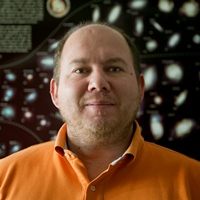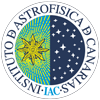Jesús Falcón Barroso

Dates of the visit: 25/07/2013 to 12/09/2013.![]()
Research line: Formation and Evolution of Galaxies
Institution visited: Mt Stromlo Observatory, Research School of Astronomy & Astrophysics, The Australian National University (Canberra, Australia).
Dr. Falcón collaborated with Dr. Ken Freeman at the Mt Stromlo Observatory on the development of an innovative technique to recover simultaneously the 2D dynamics and stellar populations to constrain scenarios for the secular evolution of galactic bulges. The results are still in preparation for publishing.
Currently Dr. Falcón is a Ramón y Cajal fellow and head of the 'Traces of Galaxy Evolution' group at the IAC.
He obtained his PhD at the University of Nottigham in 2003 under the supervision of Prof. R.F. Peletier. He was then awarded a postdoc position in the EU-funded Euro3D Research Training Network at Leiden Observatory in Prof. P.T. de Zeeuw's group. In 2006, before coming to the IAC, he took an ESA research fellowship at the European Space Research and Technology Centre (ESTEC) also in The Netherlands.
His main interests of study are the kinematics and stellar populations of nearby galaxies as a tool to understand the role of secular processes in the formation and evolution of galaxies. He is involved in some of the major international surveys in this respect that use integral-field units (SAURON, ATLAS3D, CALIFA, MaNGA). He is also interested in building stellar libraries for the development of stellar population models that are used to interpret spectroscopic observations.
The goal of the visit to Mt. Stromlo was to work with Prof. Ken Freeman, and several other collaborators, on the development of an innovative technique to recover simultaneously the 2D dynamics and stellar populations to constrain scenarios for the secular evolution of galactic bulges. This method will allow to understand the role of disks and bars in the evolution of galactic bulges, including their build-up, the redistribution of the stellar components, and the evolution of the orbital structure coupled with the star formation history.
Observations of three galaxies were obtained with the WiFeS integral-field unit at Siding Spring Observatory in Australia in July 2013. The first article of the series, summarizing the main stellar population properties of these bulges, is in its final stages before submission, while a second one with the outcome of the new technique is still in preparation.


